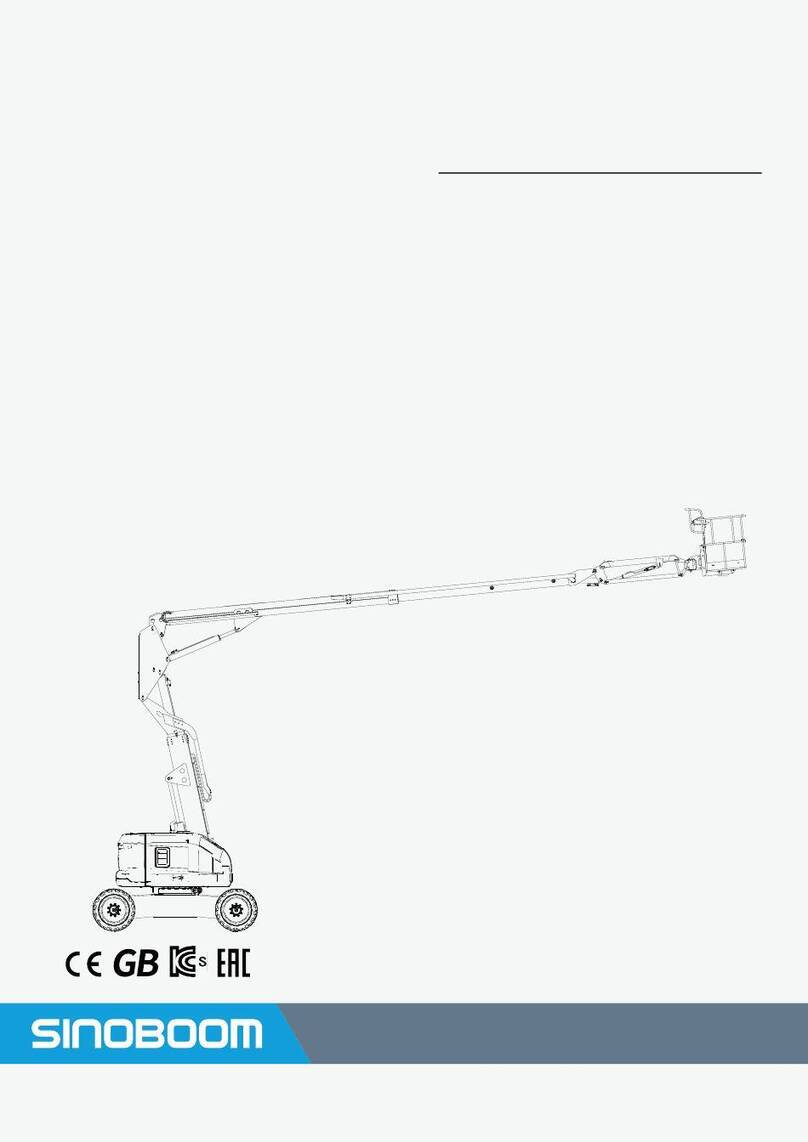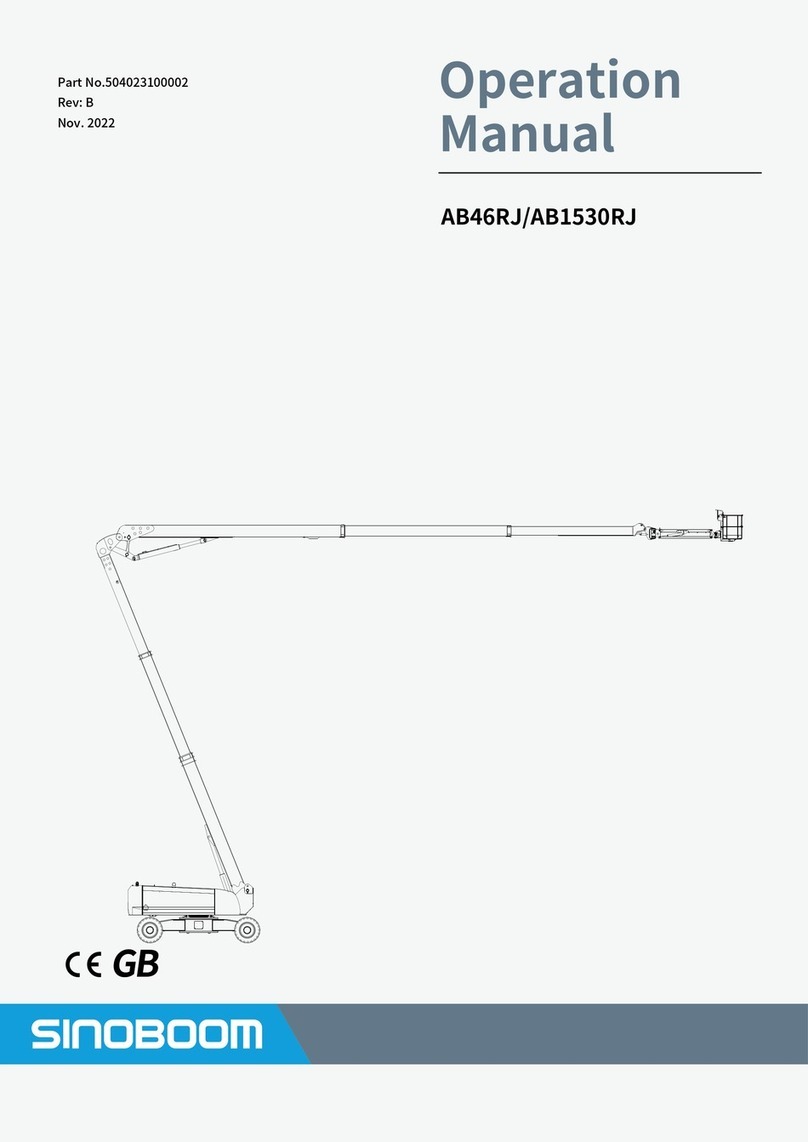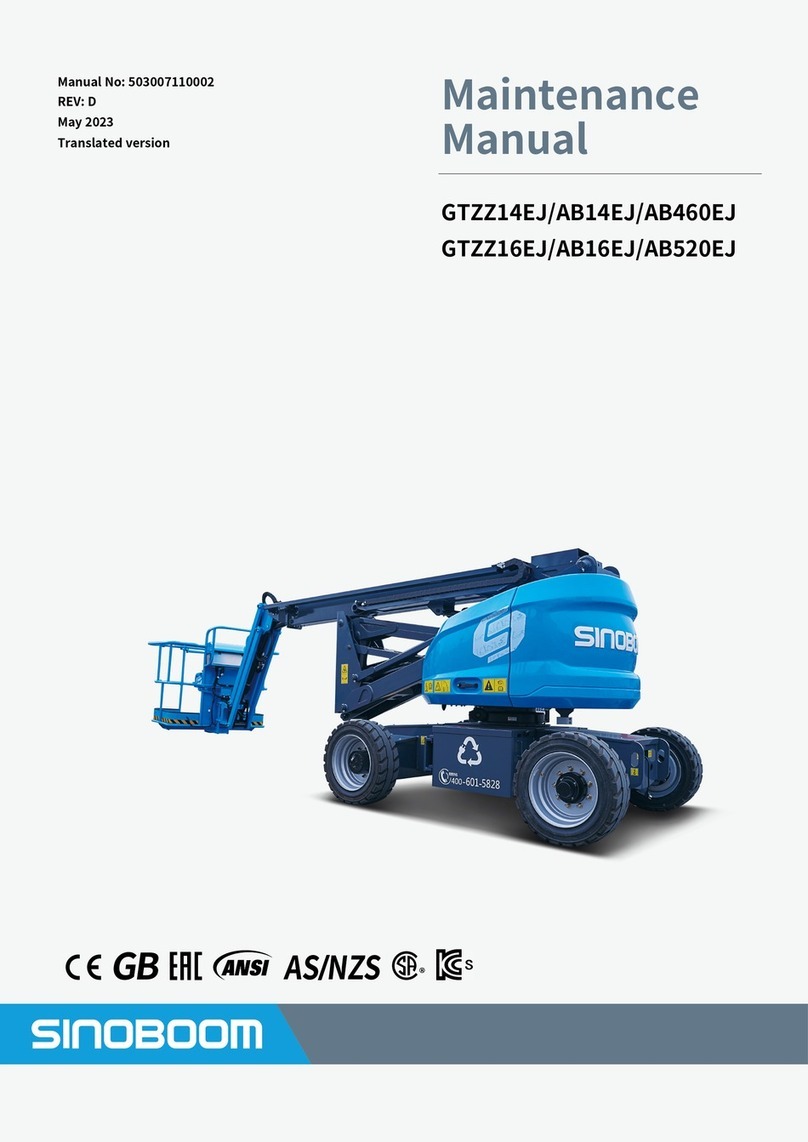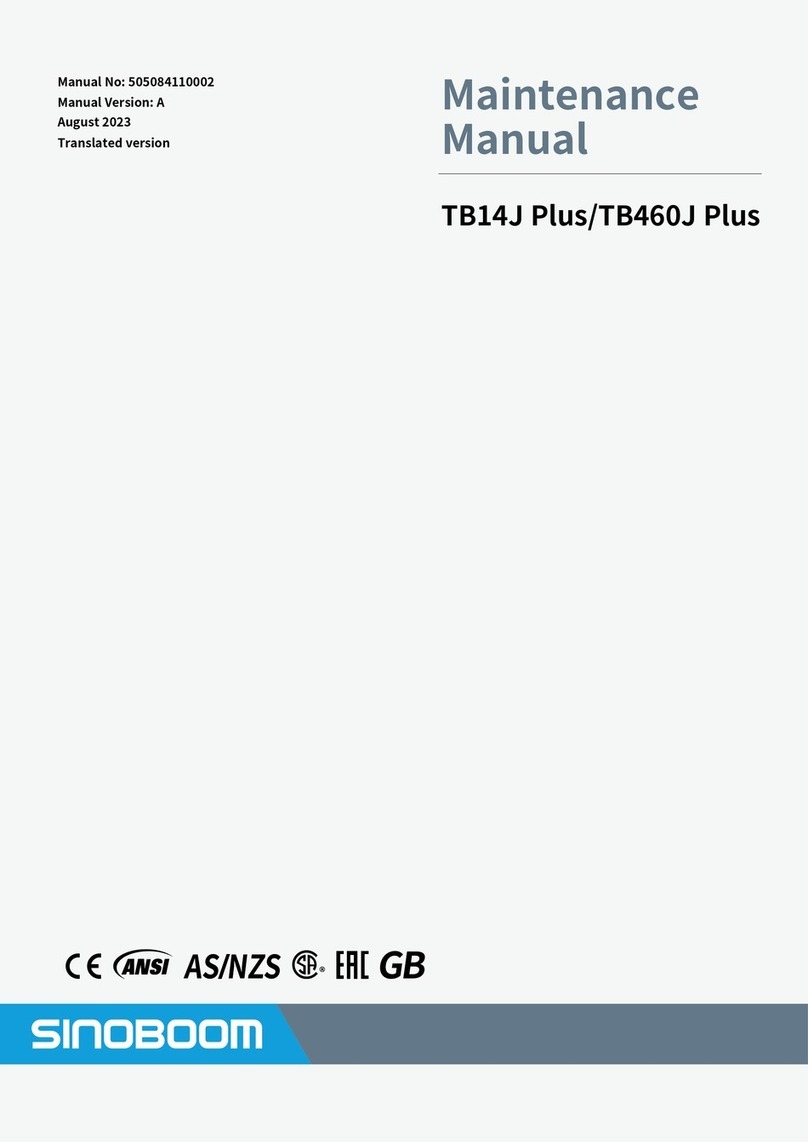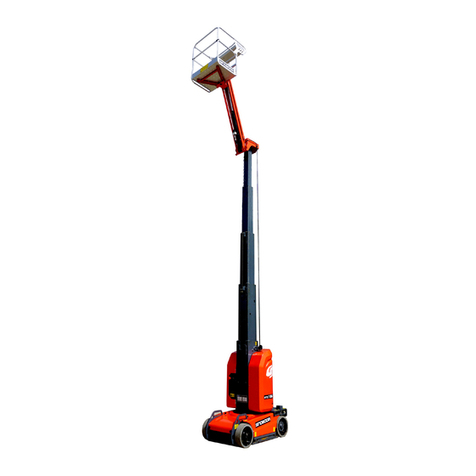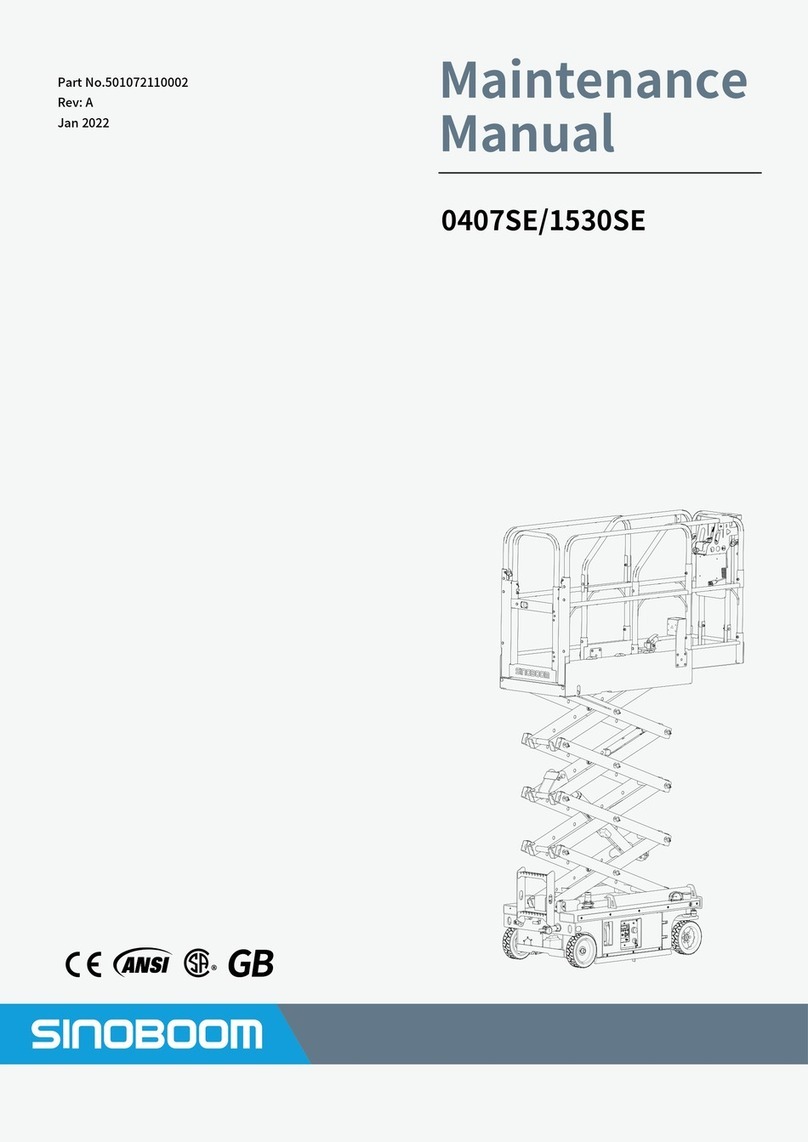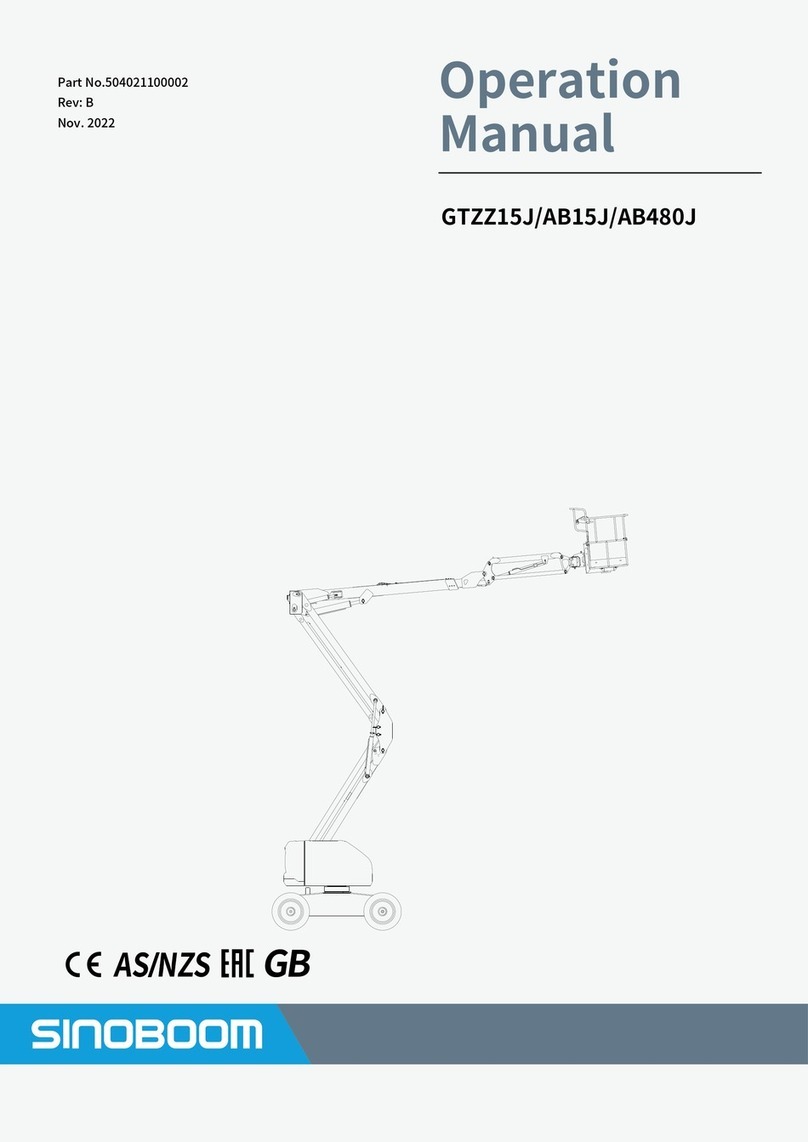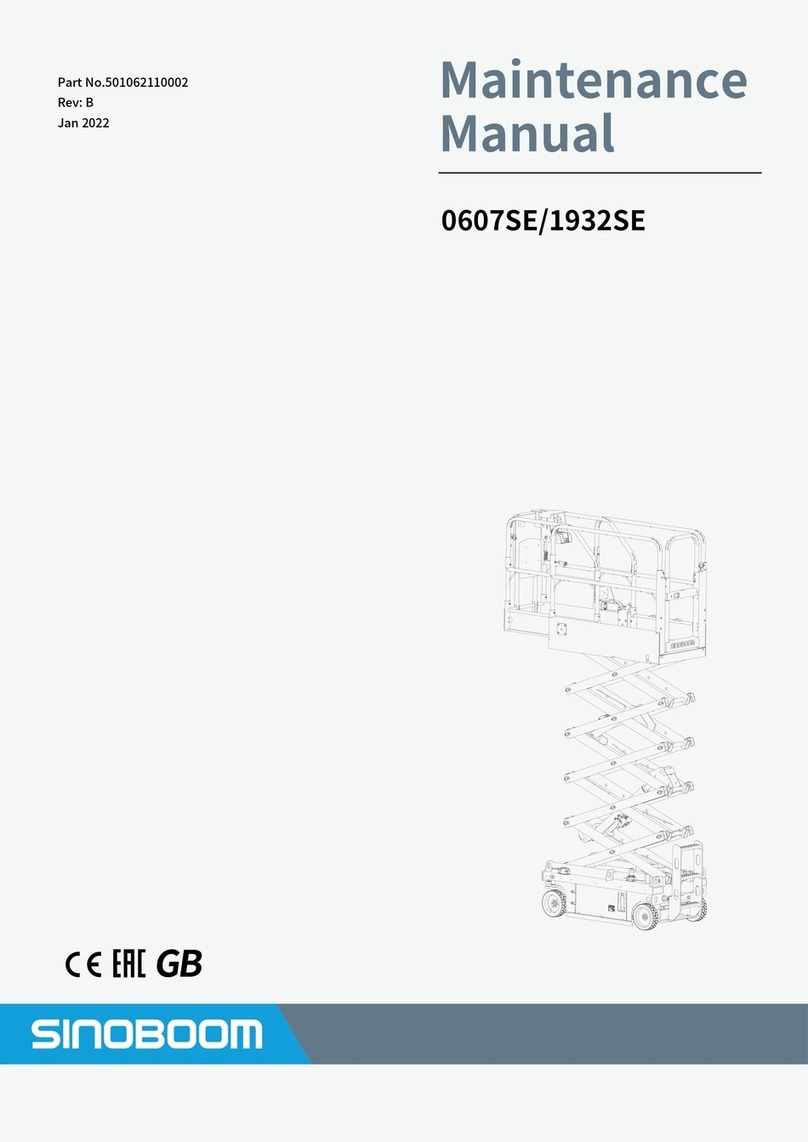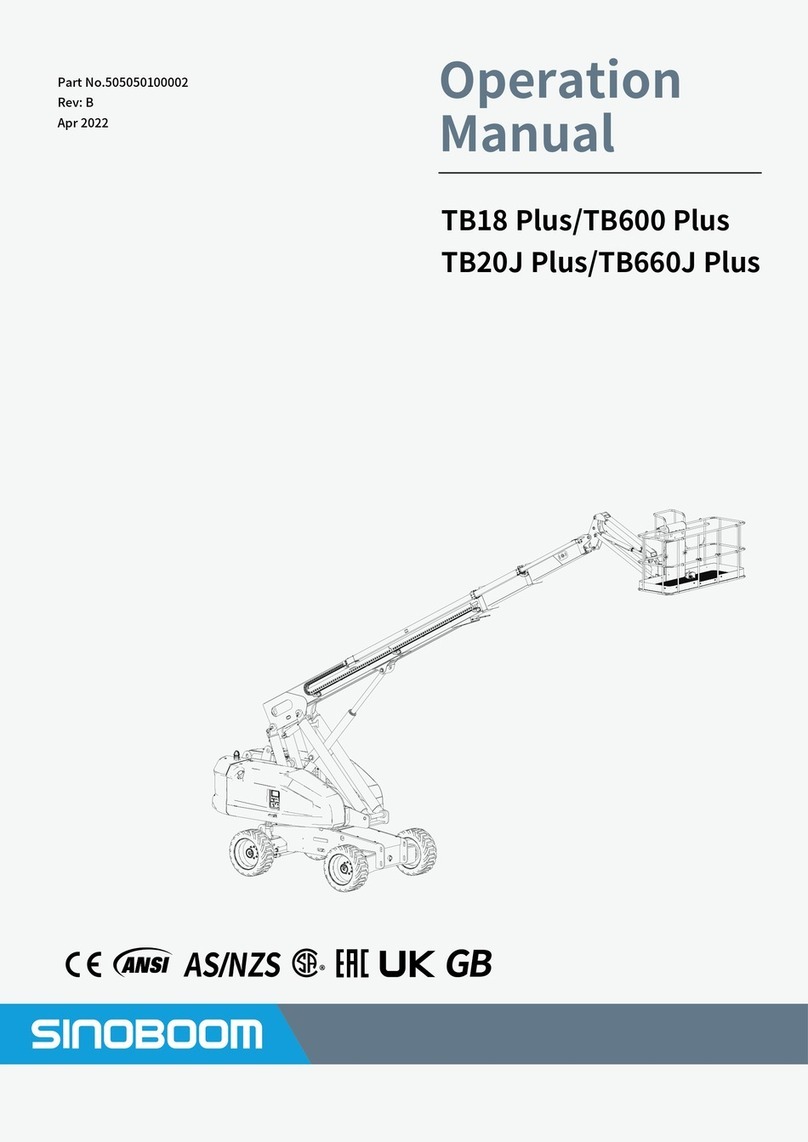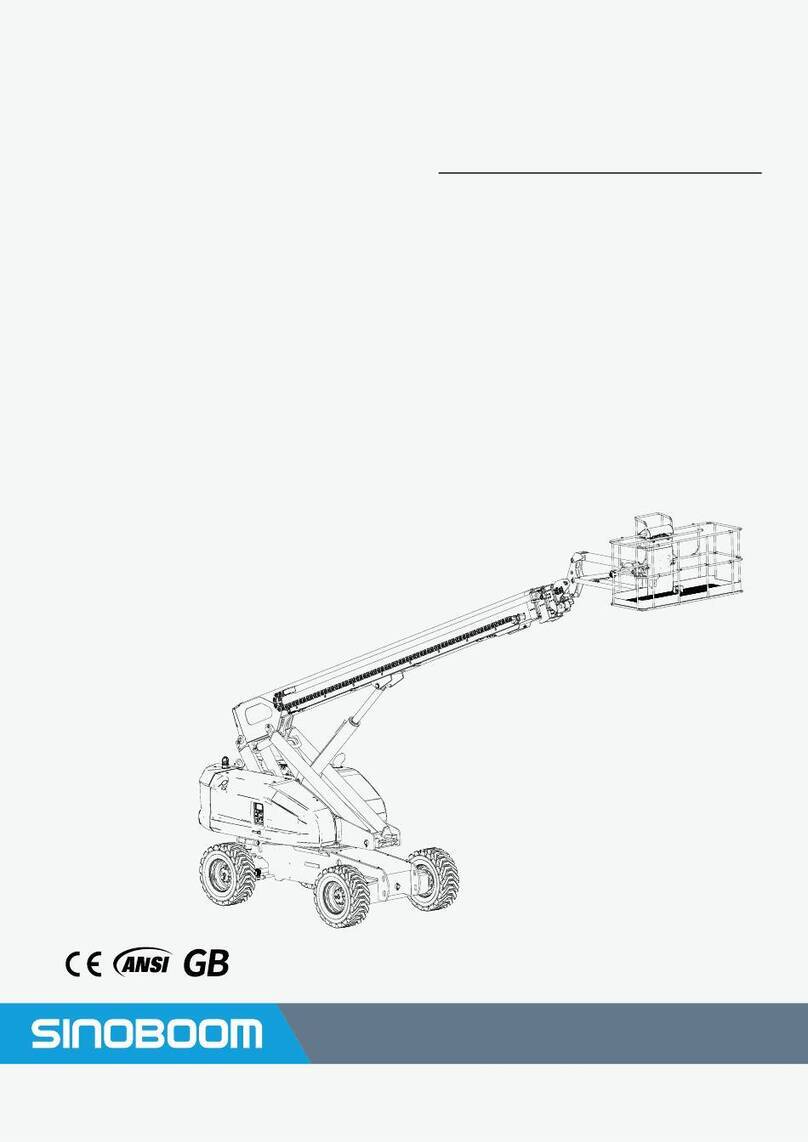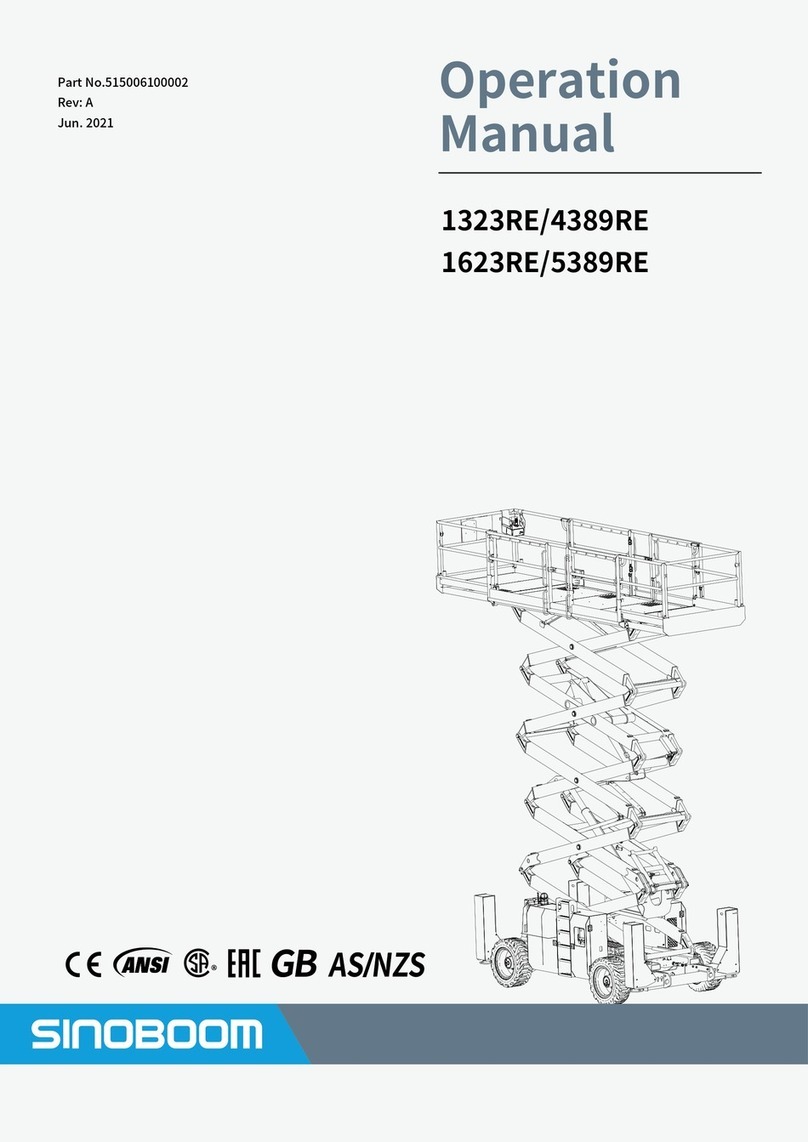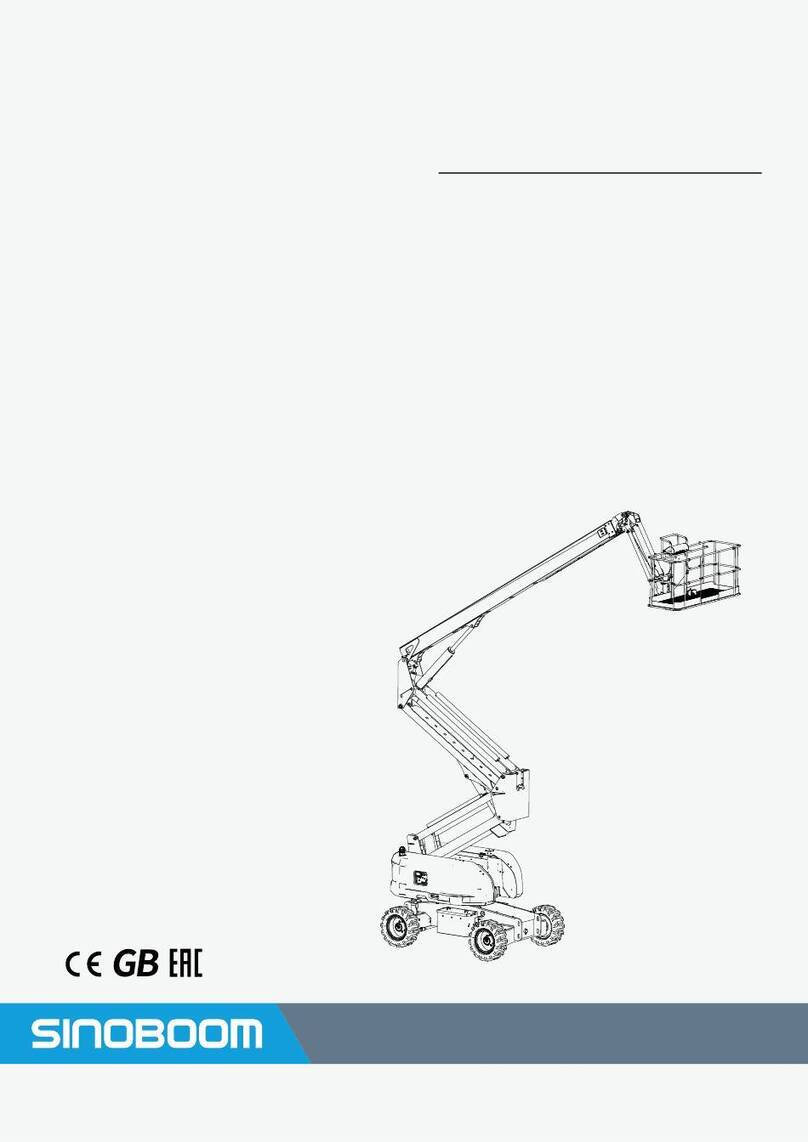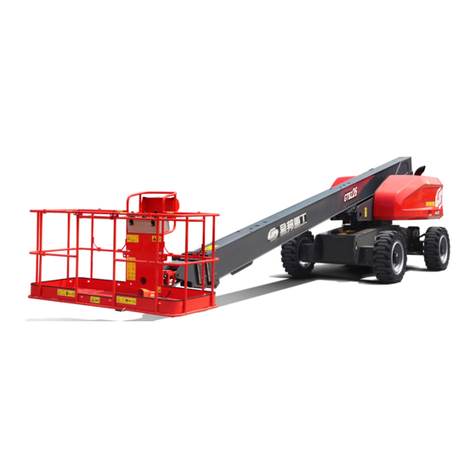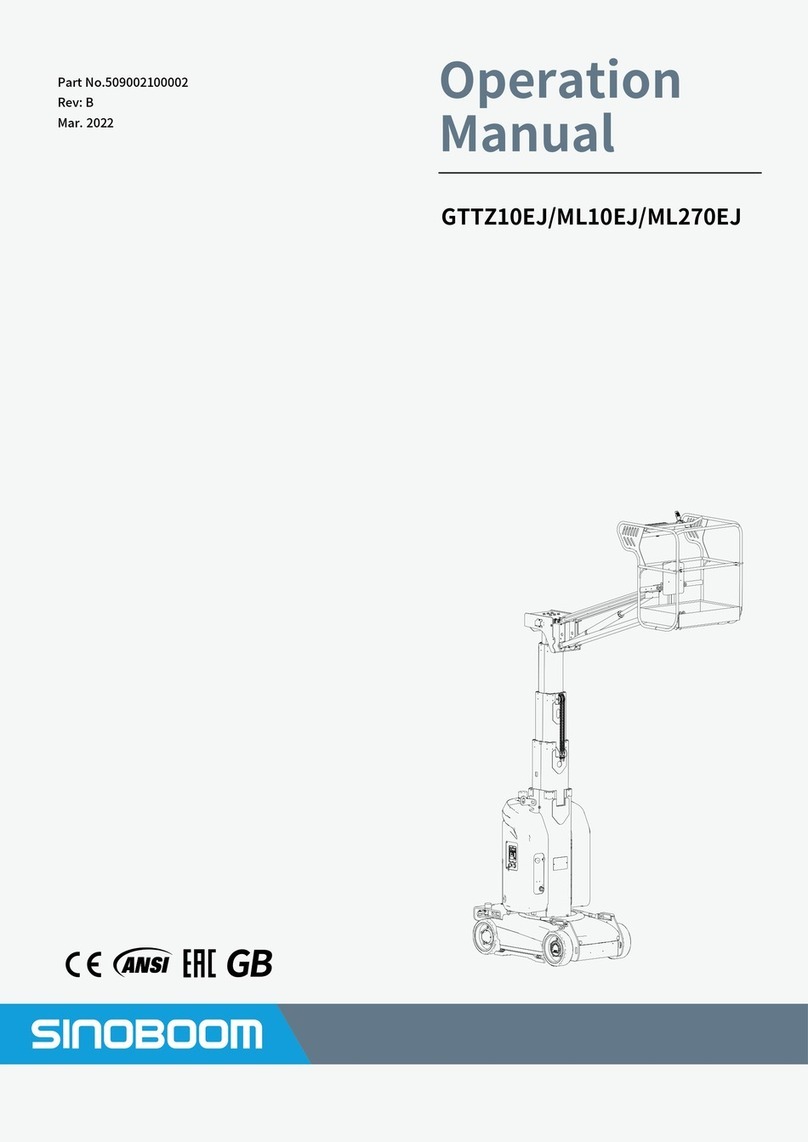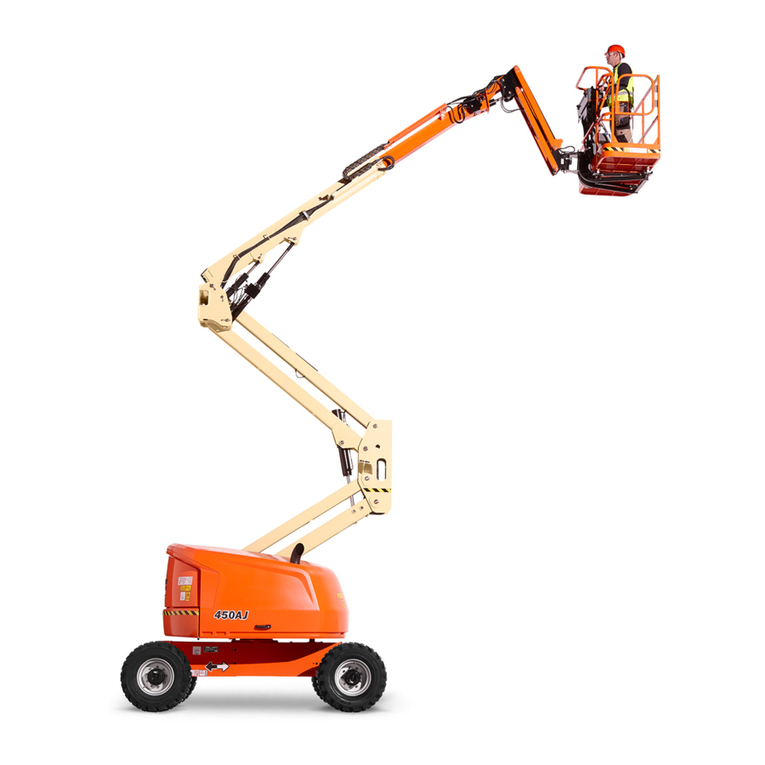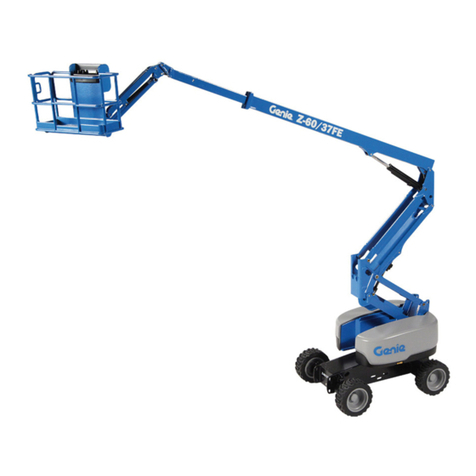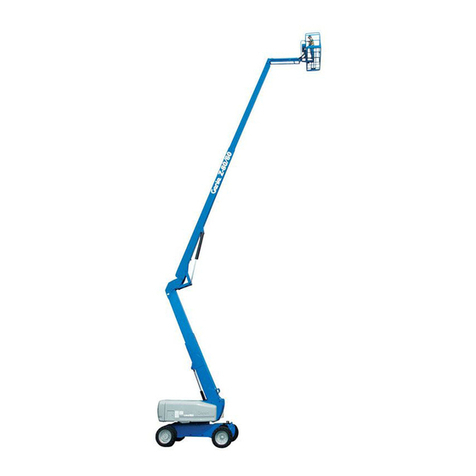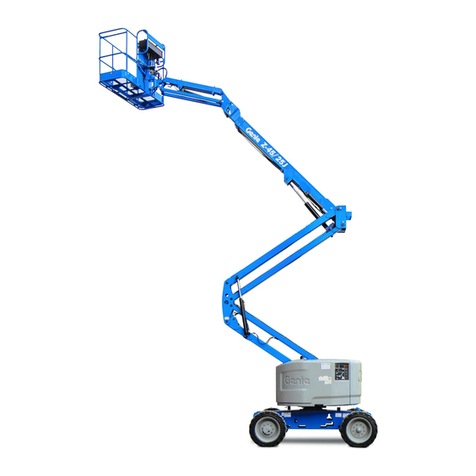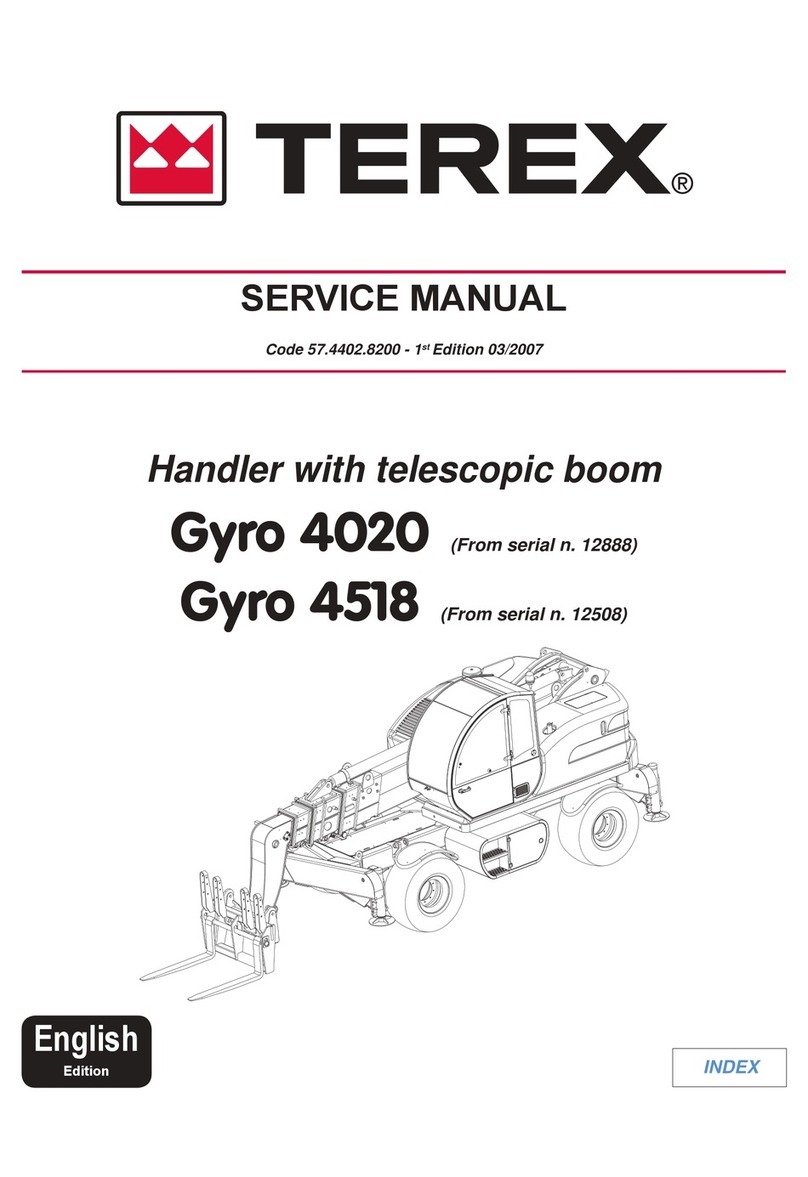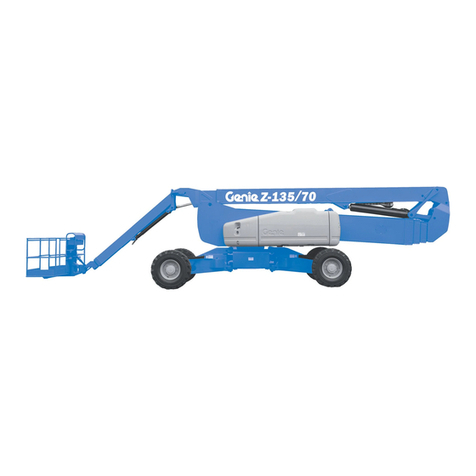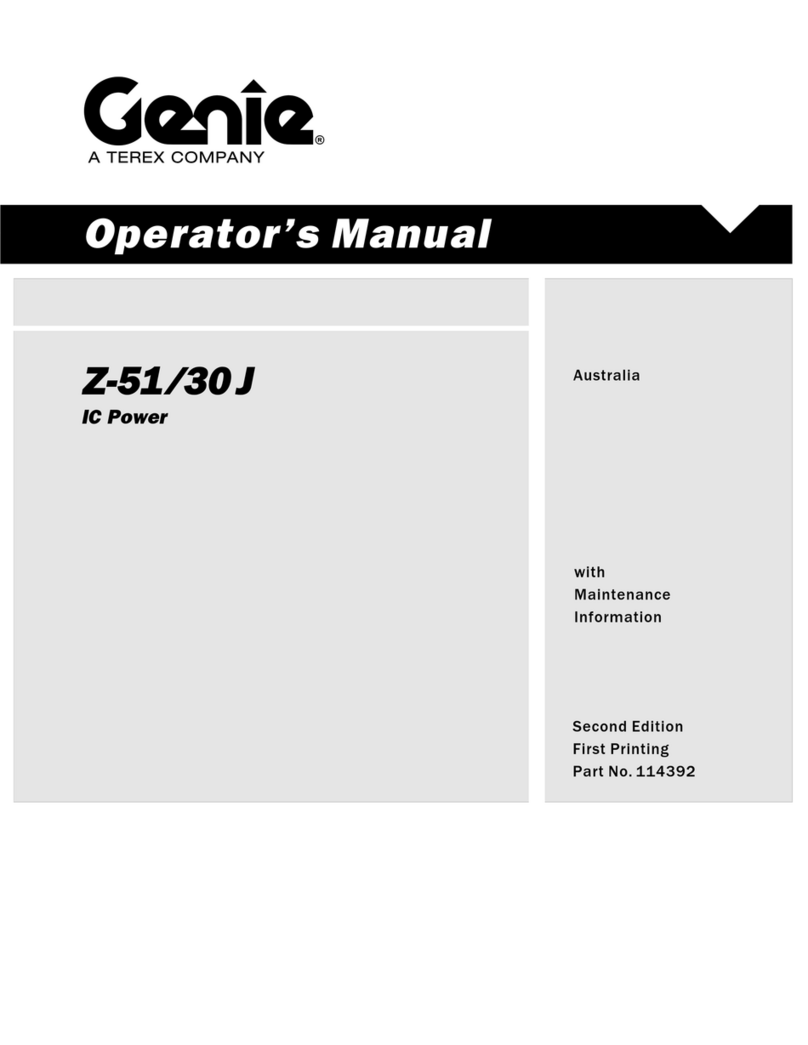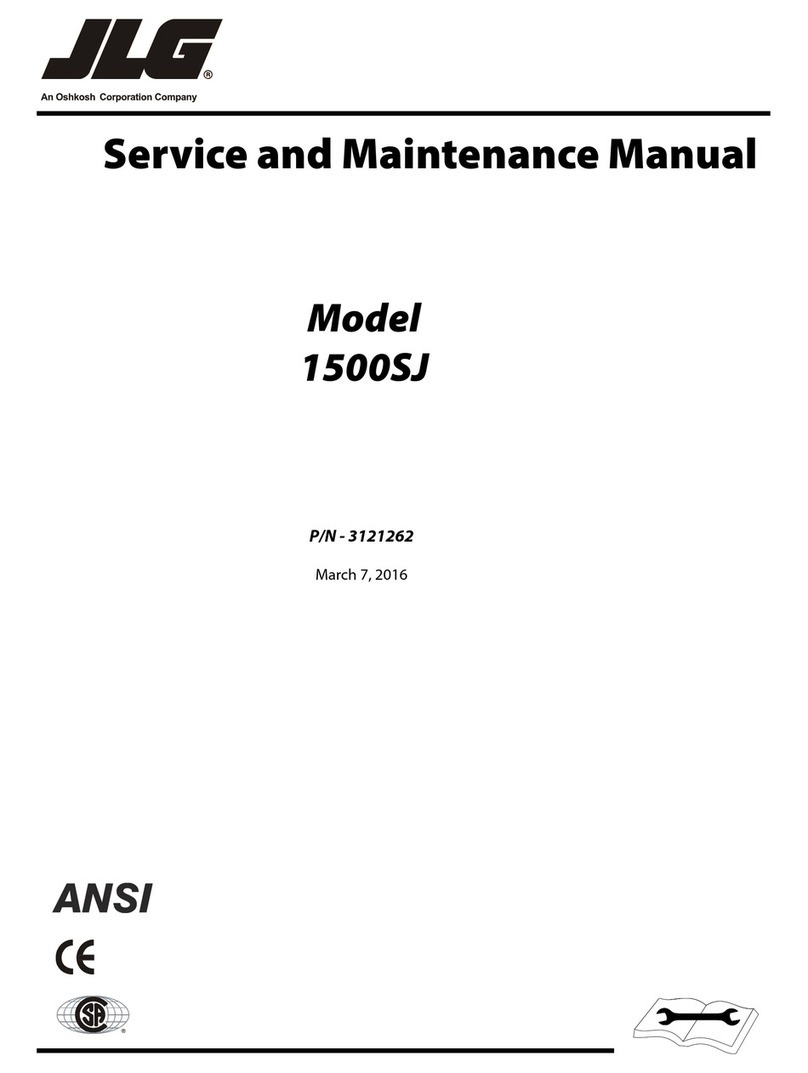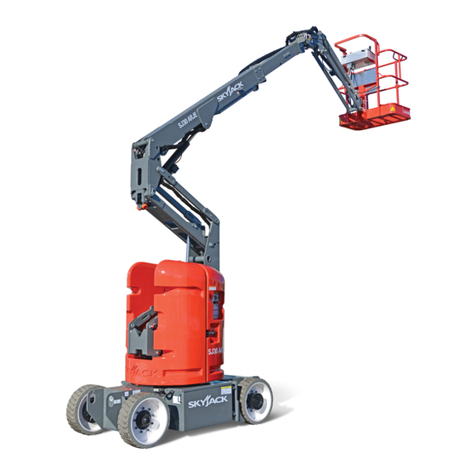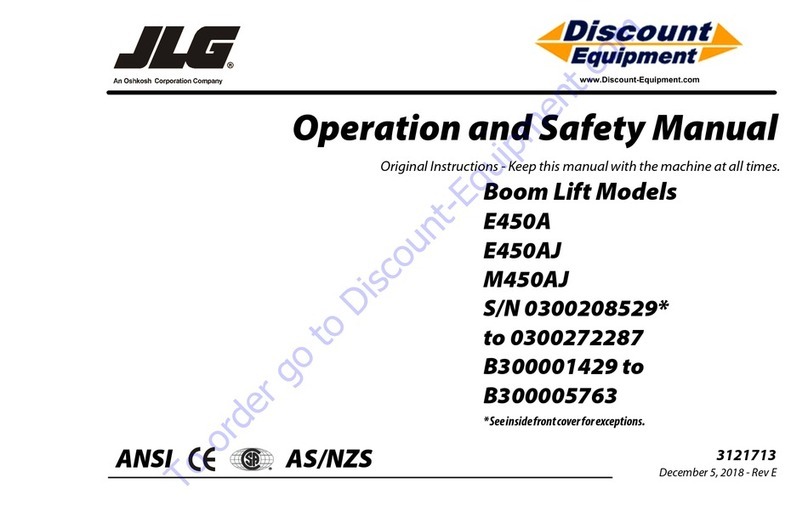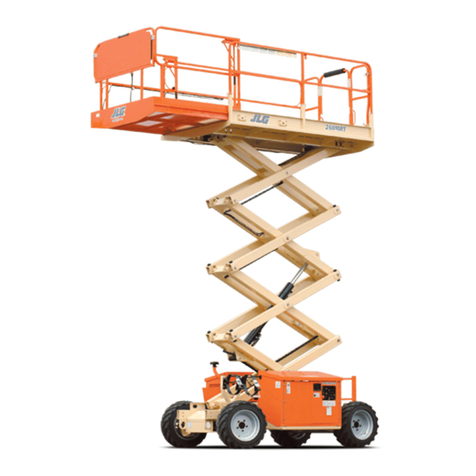
To Users
Thank you for choosing and using the machinery of Hunan Sinoboom In-
telligent Equipment Co., Ltd.
Use this machine only to transport tools to work locations and for
performing tasks on the work platform. Only authorized personnel who
have received appropriate MEWP training may operate this machine.
Before using the machine, carefully read and fully understand this manual
and strictly follow its relevant instructions. Different countries, regions, or
governments may have equipment operating regulations that conflict with
this manual. The stricter safety operating regulations should be followed.
Our company will not be liable for any adverse consequences arising from
the failure to operate and use the machine in accordance with this manual
or the relevant regulations.
This manual provides necessary safety precautions and operation
instructions for users. This manual covers the basic configuration
information of one or more models. Please refer to the information
applicable to your machine model. Treat this manual as an integral part of
the machine and keep it with the machine at all times This manual may
not be copied, distributed, sold, or altered without written permission from
Sinoboom.
Due to continuous improvement and upgrading of product design and
different product models covered, some charts and textual content in the
manual may be not applicable to your machine. Our company reserves
the right to revise the contents of this manual due to technological
improvements. Changes will be made without prior notice. Contact
Sinoboom to obtain the most current version of the manual.
Please go to www.sinoboom.com.cn to download your desired Operation
Manual, Maintenance Manual and Parts Manual.
If you have any questions, contact Hunan Sinoboom Intelligent Equip-
ment Co., Ltd.
